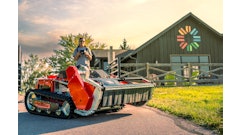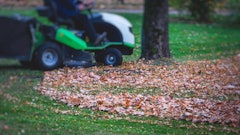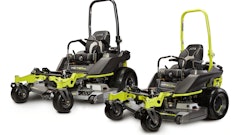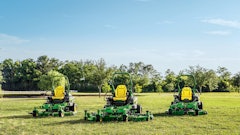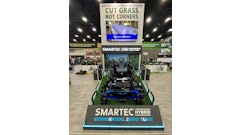
The landscape industry is moving toward more sustainable practices and solutions to help protect the environment that will ultimately aid in preserving local ecosystems and preventing pollution.
The introduction of AI-powered robots will play a critical role in sustainability by improving efficiencies, reducing dependency on human labor and eliminating waste.
Here’s a snapshot of what’s happening in the industry.
The switch from gas to electric battery-operated equipment
Gas mowers contribute 5 percent of U.S. air pollution emissions. Already 100 U.S. municipalities restrict gas-powered outdoor power equipment (OPE), with the entire state of California set to follow this mandate next year.
Starting in 2024, the sale of new gas-powered blowers, mowers, weed trimmers and chainsaws will be banned in California.
The California Air Resources Board (CARB) announced that all landscaping operations in the state will have to use only electric or battery-powered equipment.
According to CARB, “Gas-powered lawn and garden equipment can contribute heavily to local and regional air pollution. Currently, a new gas-powered mower running for one hour produces similar emissions to the average car driving for 100 miles.”
Bottom line, phasing out gas powered equipment and adopting new electric and battery-operated equipment and technologies will help improve air quality, reduce noise, cut carbon emissions and have massive improvements on the environment.
Automation of lawn maintenance
An increase in turf grass coverage results in an increase in carbon sequestration.
Research modeling of carbon sequestration by lawns indicates that lawns in the U.S. alone can sequester between 12.5 million and 95 million tons of atmospheric carbon dioxide per year. This is equivalent to the annual emissions of between 2.4 million and 18 million typical passenger vehicles.
Automation significantly reduces the cost of turf maintenance, which can lead to a higher proliferation of turf grass coverage across the world. Consolidation of mowing also means fewer machines are produced.
Machine-learning-driven resource optimization and automation provides a foundation for lawn maintenance to drive down the hidden carbon costs of irrigation and fertilizer use. Robots can help in this area and meter the use of fertilizer, water and weed treatment, and energy consumption.
The future of AI is sustainable.
Today, our green spaces provide a very necessary “carbon sink” within our communities. However, the benefit of these spaces is negated when we’re maintaining them with outdated, gas-powered equipment that hasn’t evolved in several decades.
By empowering our businesses and the equipment we use with AI, we’re charting a path to a more sustainable world. A sustainable world includes smart machines and humans working together to build, operate and maintain public, private and commercial spaces.
When a robot + human “co-bot” model is deployed, it detaches costly human labor from the task of mowing. This means that landscaping companies and their crews no longer need overpowered gas machines that include a human being, nor do they have the same productivity expectations. As a result, the crews can use much smaller, electric machines with the freedom to move more slowly as their human partners are completing the more dexterous, skilled tasks like pruning.
Helping with wildfire prevention.
Newer AI-powered outdoor maintenance technology coming to market is also perfectly designed to aid with fire prevention in vast open areas impacted by wildfires and can help keep our communities safer. AI-based robotic mowers are trained to tackle the steep incline of the hillsides, eliminate underbrush and assist crews in the more fire prone areas, especially throughout California and states with areas impacted by the threat of fires.
Automation of weed abatement especially in California can prevent wildfires by creating fire breaks. Municipalities often defer this regularly needed weed abatement work because of the cost and complexity in having it done. Today teams of laborers are hired to operate string trimmers or "weed eaters" to knock down vegetation by foot. Automated brush and slope mowers will start doing this at a much lesser cost, much more safely and efficiently.
This is not to mention completing this work when a fire has already broken out and it's not safe or possible for a human worker to cut fire breaks effectively. The deployment of a "co-bot" approach will add value and help save lives.
Landscape owner/operators are now being overwhelmed with new technology.
A lot of this is targeted toward labor challenges and rising costs, but there’s also been huge advancements in battery technology. Where we are going to see the biggest advances is where technology is being leveraged to do both (electrify and automate). The landscape maintenance industry is making significant changes with the integration of advanced technologies as well as new legislation that will have a positive impact on the environment.


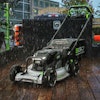

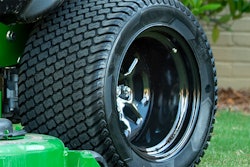
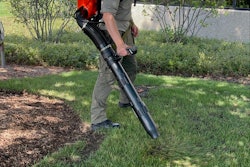
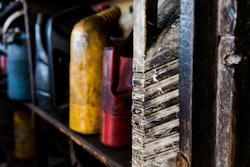
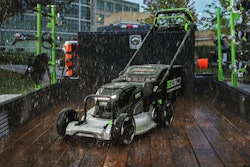


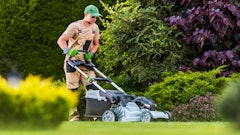
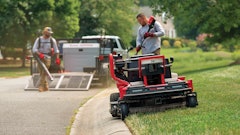
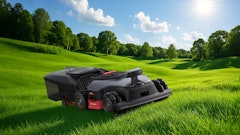
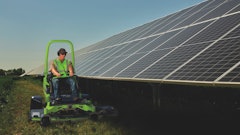

![Gravely Pro Turn Mach One My23 Dsc03139 Edit 1200x800 5b2df79[1]](https://img.greenindustrypros.com/mindful/acbm/workspaces/default/uploads/2025/10/gravely-pro-turn-mach-one-my23-dsc03139-edit-1200x800-5b2df791.BucBnDoN22.jpg?ar=16%3A9&auto=format%2Ccompress&fit=crop&h=135&q=70&w=240)
